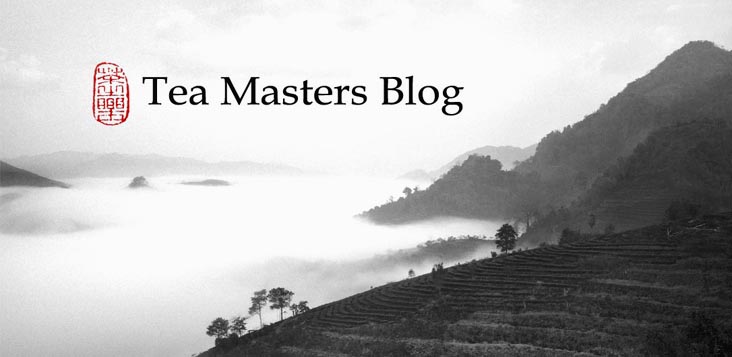From left to right: a stainless kettle, my Lung Wen Tang tetsubin, my silver kettle, my (cracked) Dragon tetsubin.

Experiment background:
- Same mineral water ('Yes', from Taiwan),
- Heating with gas up to boiling point at the same time on my kitchen stoves,
- Same 'singing' cup to taste the waters
- Unable to do this experience in 'blind' conditions, I have repeated the experiment 1 week later.
Results:
- Each cup of hot water tastes different. The differences are big enough to be noticed quite easily. What were those differences?
- The stainless kettle produced a water that was more closed. I felt the stainless steel left a somewhat unpleasant, unnatural taste. In this experiment it wasn't too bad, because the water didn't stay in the kettle very long. I experiment this unpleasant taste with water coming from a stainless 'always on' hot water fountain.
 - The old tetsubin makes a rounder, more lively, not closed hot water. The slight iron taste brings more body and sweetness to the water.
- The old tetsubin makes a rounder, more lively, not closed hot water. The slight iron taste brings more body and sweetness to the water. However, it has some odd, old smells. I also noticed that there are some iron deposits at the bottom of my cup (I didn't drink those). This is quite normal, because I have just bought this pot and it accumulated some smells during years of storage and lack of use. One week is not enough to get rig of those. I need to continue using it regularly.
I also noticed that the vendor had placed some charcoal inside the kettle. I should probably do the same with my bamboo charcoal when I'm not drinking.

- The silver kettle gave me the water with the fewest alterations. It tasted very pure, light and 'fresh', vibrant (as opposite to closed).
I also noticed that the water from this kettle was the hottest. This is consistent with the fact that silver is more thermoconductive than other materials.
(I also tasted the waters after letting them cool down and comparing them to the cold mineral water).
 - The dragon tetsubin also had a sweet iron taste, but it felt a little less round than with the old tetsubin. (Maybe it's because this tetsubin is modern or because I recently overheated it.) I also noticed a strong and bad small of licorice. Its water didn't use to smell bad. What happened? After the second failed attempt to cure the crack, I have purchased another tetsubin. Since then, I had put back the dragon tetsubin in its original box, next to my stash of medicine. And this first aid closet smells very much like this licorice smell! So, within a week, the tetsubin has picked up these bad smells (iron is somewhat porous). A week later, after keeping it outside, this bad smell is still there. (I should have opened the cover! I have done so now).
- The dragon tetsubin also had a sweet iron taste, but it felt a little less round than with the old tetsubin. (Maybe it's because this tetsubin is modern or because I recently overheated it.) I also noticed a strong and bad small of licorice. Its water didn't use to smell bad. What happened? After the second failed attempt to cure the crack, I have purchased another tetsubin. Since then, I had put back the dragon tetsubin in its original box, next to my stash of medicine. And this first aid closet smells very much like this licorice smell! So, within a week, the tetsubin has picked up these bad smells (iron is somewhat porous). A week later, after keeping it outside, this bad smell is still there. (I should have opened the cover! I have done so now).







6 comments:
Out of curiosity I'd like ask if
water experiment could be repeated using a copper water kettle.
bonjour Stephane,
je constate que toutes ces theieres sont en metal. As tu deja fait le test en les comparant avec des theieres en terre cuite?
olivier
I think what is really missing is
a comparison with a (good) clay and glass kettle as I suppose these are the most common used kettles.
Hello Stephane,
I was wondering about your wares for sale. How do I find out more? Please email me al oijos AT gm ail dot com. Thank you!
Salut Stéphane,
J'espère que tu as reçu mes trois mails dont un concerne une demande sur 2 des 5 tetsubins.
Thanks for all your suggestions. Unfortunately, I don't have a copper nor a glass kettle. As for the clay kettle, I wrote a separate article about its water (in French: chercher bouilloire glaise noire).
If you happen to have done a comparison with these kettles, you're welcome to leave your impressions under this post!
Post a Comment